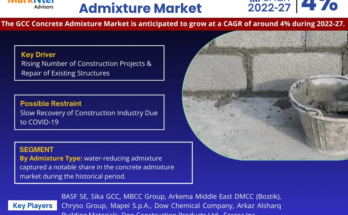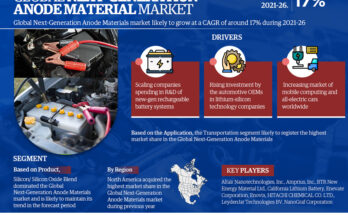Global Hot Melt Adhesives Market has valued at USD 8.86 billion in 2022 and is anticipated to project robust growth in the forecast period with a CAGR of 4.63% through 2028. Hot melt adhesives, also known as hot glues, are solid formulations primarily composed of thermoplastic polymers. These adhesives exhibit a solid state under normal temperatures but transform into a liquid state upon heating above their softening point. Once applied and cooled, they solidify, creating a robust bond with excellent structural integrity. The manufacturing process involves blending thermoplastics with various additives such as waxes, plasticizers, fillers, resins, and antioxidants to achieve desired properties.
Hot melt adhesives offer versatile application methods, including extrusion, screen printing, spiral spraying, melt blowing, and slot die coating. Unlike other adhesives, hot melt adhesives provide instant bonding with a wide range of materials, including plastics, ceramics, glass, paper, rubber, wood, and metal. Consequently, they have found extensive use in diverse industries such as packaging, construction, electronics, textiles, and automotive.
The demand for hot melt adhesives is primarily driven by the growing packaging sector, where they are widely used for sealing, assembling, and labeling corrugated boxes and paperboard cartons. Furthermore, the automobile industry relies on hot melt adhesives for assembling car seat covers and carpets, contributing to their high demand. The furniture industry also experiences a surge in demand for hot melt adhesives due to the increasing popularity of fully assembled and laminated furniture.
In addition, the infrastructural development taking place in emerging economies like India, China, and Vietnam has further augmented the use of hot melt adhesives. These adhesives are employed for binding ceramics, wood panels, flooring materials, and reengineered plastics. The food and beverage sector is also contributing to the demand for hot melt adhesives, particularly due to the rising adoption of customized and flexible packaging. Notably, hot melt adhesives are preferred in the industry as they do not contain volatile organic compounds (VOCs), which can lead to foul odor and negatively impact food quality.
Moreover, the market for hot melt adhesives has witnessed advancements with the introduction of the PUR (polyurethane reactive) technology. This innovation has brought forth advanced product variants that offer high heat resistance, UV protection, and superior binding strength. These enhanced properties have positively influenced the growth of the hot melt adhesives market, expanding its application potential.
Key Market Drivers
Growing Demand of Hot Melt Adhesives in Construction Industry
Hot melt adhesives (HMAs) are thermoplastic materials that melt at high temperatures and solidify upon cooling to create strong and durable bonds. These versatile adhesives offer numerous advantages over other bonding methods in the construction industry.
In construction applications, HMAs find wide usage in various areas such as flooring, insulation, roofing, and panel lamination. They are also extensively used in the production of windows and doors, as well as for bonding different construction materials together. The growing demand for hot melt adhesives can be attributed to the robust growth of the construction industry worldwide, particularly in developing economies. As construction companies strive to enhance efficiency and productivity, they increasingly rely on HMAs for their exceptional bonding capabilities and quick setting times.
Moreover, the increasing focus on energy-efficient buildings and sustainable construction practices has further propelled the use of HMAs. These adhesives play a crucial role in the installation of insulation materials, contributing to improved energy efficiency in buildings.
The construction industry has witnessed significant advancements in adhesives technology, driving the demand for HMAs. Manufacturers are continuously developing advanced hot melt adhesives with enhanced performance characteristics, including superior heat resistance, improved bonding strength, and greater flexibility. These innovative products cater to the evolving needs of construction projects, ensuring reliable and long-lasting bonds.
Furthermore, in response to growing environmental concerns and stricter regulations on volatile organic compound (VOC) emissions, there is a rising trend towards the development of biobased HMAs. These eco-friendly adhesives not only address sustainability concerns but also present new opportunities for the construction industry.
Overall, hot melt adhesives are indispensable in the construction sector, offering exceptional bonding capabilities, quick setting times, and the ability to withstand demanding conditions. Their versatility, combined with continuous advancements in technology and sustainability, ensures their significant role in the future of construction.
Growing Demand of Hot Melt Adhesives in Packaging Industry
The global hot melt adhesives market is experiencing robust growth, with its size projected to increase significantly over the next decade. This burgeoning market is driven by the rising demand for hot melt adhesives in various sectors, particularly the packaging industry.
Hot melt adhesives, which are 100% solid, solvent-free compounds that become fluid when heated, have been steadily gaining popularity due to their superior adhesive properties and environmental benefits. These adhesives offer excellent adhesion, fast set times, and long-term stability, making them an ideal choice for diverse applications in the packaging industry.
The packaging industry is a significant consumer of hot melt adhesives. With the sector’s exponential growth, the demand for these adhesives has surged. The industry uses these adhesives in various applications, including carton sealing, tray forming, and case sealing. As per a report by GM Insights, the hot melt adhesives industry share from the packaging application is estimated to surpass USD 7.5 billion by 2032.
In addition to the packaging industry, the hot melt adhesives market is also driven by the demand for non-woven and hygiene products. As consumers increasingly prioritize sustainable packaging solutions, the need for hot melt adhesives is expected to further augmented.
The increasing demand for hot melt adhesives in the packaging industry, coupled with their environmentally friendly nature and superior adhesive properties, makes them a growth engine for the global adhesives market. As industries continue to seek efficient and sustainable solutions, the future of the hot melt adhesives market looks promising. The market is poised to witness continuous growth and innovation, with advancements in technology and expanding applications across various industries.
Download FREE Sample Report @ https://www.techsciresearch.com/sample-report.aspx?cid=3496
Key Market Challenges
Volatility in Prices of Raw Materials
Hot melt adhesives are composed of three primary components: high molecular weight polymers, tackifying resins, and waxes or oils. These materials, obtained from petroleum, a non-renewable resource, are subject to price fluctuations in the global market due to changes in supply and demand dynamics. The dependence on petroleum-based products as raw materials has long been a concern for industries relying on them, given the potential impact on production costs. The prices of these crucial inputs can fluctuate due to a myriad of factors, including geopolitical tensions, natural disasters, changes in production levels, and shifts in global demand.
For instance, the recent COVID-19 pandemic had a profound effect on the oil industry, leading to unexpected swings in petroleum prices. This volatility directly affected the cost of producing hot melt adhesives, creating an atmosphere of uncertainty and potential financial risk for manufacturers. The implications of such raw material price volatility have a ripple effect on the hot melt adhesives market. As the cost of raw materials rises, it inevitably increases production costs for manufacturers, who may then pass on these increased costs to consumers in the form of higher prices. Consequently, this price increase can potentially dampen demand, as consumers become more price sensitive.
Moreover, the unpredictability of raw material costs poses challenges for businesses in the hot melt adhesives sector when it comes to budgeting and forecasting. The difficulty in accurately predicting these costs can lead to reduced profit margins, especially for smaller manufacturers who may lack the financial resilience to absorb sudden cost increases. The need for stability and predictability in raw material prices is crucial for maintaining a sustainable and profitable business model in the hot melt adhesives industry.
Key Market Trends
Surge in Technological Advancements
Hot melt adhesives have undergone remarkable improvements thanks to continuous technological advancements. These developments have resulted in the creation of adhesives that boast not only superior bonding capabilities but also enhanced durability and increased resistance to heat and chemicals. As a result, the potential applications of hot melt adhesives have expanded, leading to a significant surge in demand.
Furthermore, the progress made in polymer technology has played a pivotal role in the development of high-performance hot melt adhesives. Polymer-based hot melt adhesives, in particular, have been gaining popularity due to their exceptional adhesion properties, remarkable versatility, and ease of use.
In line with the growing trend towards sustainability and eco-friendly products, the adhesive industry has been responding by offering more environmentally conscious options. This response is driven by the increased environmental awareness and stricter regulations regarding the use of potentially harmful materials. Technological advancements have enabled manufacturers to produce hot melt adhesives that are not only high-performing but also more environmentally friendly. For instance, the development of bio-based hot melt adhesives provides a greener alternative to traditional petroleum-based products. These adhesives are derived from renewable resources and are biodegradable, significantly reducing their environmental impact.
It is evident that the surge in technological advancements has had a positive and transformative impact on the global hot melt adhesives market. With improved performance, increased sustainability, and environmentally friendly options, the demand for hot melt adhesives is poised to continue its exponential growth.
Segmental Insights
Resin Type Insights
Based on the category of resin type, the Ethylene Vinyl Acetate, segment emerged as the dominant player in the global market for Hot Melt Adhesives in 2022. EVA (ethylene-vinyl acetate) is a copolymer adhesive that finds extensive applications across diverse industries such as packaging, assembly, paper, and automotive. Its popularity stems from its exceptional adhesion, robust mechanical strength, solubility in paraffin, and remarkable flexibility. These unique properties have contributed significantly to the growth of this segment.
On the other hand, polyolefin hot melts are widely utilized in product assembly applications. This is primarily due to their excellent barrier properties, outstanding chemical resistance, and low moisture permeability, which are key factors driving the growth of this segment. These remarkable properties have led to the widespread adoption of polyolefin hot melts in various industries, including nonwoven product manufacturing and packaging, thereby positively impacting the market.
Related Reports
Polyvinyl Butyral Market [2028] – Analysis, Trends, & Insights
Engineering Plastics Market [2028]: Trends & Forecast
Commodity Plastics Market – Growth, Trends [2028], & Analysis
Table of Content-Hot Melt Adhesives Market
- Product Overview
1.1. Market Definition
1.2. Scope of the Market
1.2.1. Markets Covered
1.2.2. Years Considered for Study
1.2.3. Key Market Segmentations
- Research Methodology
2.1. Objective of the Study
2.2. Baseline Methodology
2.3. Key Industry Partners
2.4. Major Association and Secondary Sources
2.5. Forecasting Methodology
2.6. Data Triangulation & Validation
2.7. Assumptions and Limitations
- Executive Summary
3.1. Overview of the Market
3.2. Overview of Key Market Segmentations
3.3. Overview of Key Market Players
3.4. Overview of Key Regions/Countries
3.5. Overview of Market Drivers, Challenges, Trends
- Global Hot Melt Adhesives Market Outlook
4.1. Market Size & Forecast
4.1.1. By Value
4.2. Market Share & Forecast
4.2.1. By Resin Type (Ethylene Vinyl Acetate, Styrene Block Copolymers, Metallocene Polyolefin, Others)
4.2.2. By End User (Packaging Solutions, Nonwoven Hygiene Products, Others)
4.2.3. By Region
4.2.4. By Company (2022)
4.3. Market Map
4.3.1. By Resin Type
4.3.2. By End User
4.3.3. By Region
- Asia Pacific Hot Melt Adhesives Market Outlook
5.1. Market Size & Forecast
5.1.1. By Value
5.2. Market Share & Forecast
5.2.1. By Resin Type
5.2.2. By End User
5.2.3. By Country
5.3. Asia Pacific: Country Analysis
5.3.1. China Hot Melt Adhesives Market Outlook
5.3.1.1. Market Size & Forecast
5.3.1.1.1. By Value
5.3.1.2. Market Share & Forecast
5.3.1.2.1. By Resin Type
5.3.1.2.2. By End User
5.3.2. India Hot Melt Adhesives Market Outlook
5.3.2.1. Market Size & Forecast
5.3.2.1.1. By Value
5.3.2.2. Market Share & Forecast
5.3.2.2.1. By Resin Type
5.3.2.2.2. By End User
5.3.3. Australia Hot Melt Adhesives Market Outlook
5.3.3.1. Market Size & Forecast
5.3.3.1.1. By Value
5.3.3.2. Market Share & Forecast
5.3.3.2.1. By Resin Type
5.3.3.2.2. By End User
5.3.4. Japan Hot Melt Adhesives Market Outlook
5.3.4.1. Market Size & Forecast
5.3.4.1.1. By Value
5.3.4.2. Market Share & Forecast
5.3.4.2.1. By Resin Type
5.3.4.2.2. By End User
5.3.5. South Korea Hot Melt Adhesives Market Outlook
5.3.5.1. Market Size & Forecast
5.3.5.1.1. By Value
5.3.5.2. Market Share & Forecast
5.3.5.2.1. By Resin Type
5.3.5.2.2. By End User
- Europe Hot Melt Adhesives Market Outlook
6.1. Market Size & Forecast
6.1.1. By Value
6.2. Market Share & Forecast
6.2.1. By Resin Type
6.2.2. By End User
6.2.3. By Country
6.3. Europe: Country Analysis
6.3.1. France Hot Melt Adhesives Market Outlook
6.3.1.1. Market Size & Forecast
6.3.1.1.1. By Value
6.3.1.2. Market Share & Forecast
6.3.1.2.1. By Resin Type
6.3.1.2.2. By End User
6.3.2. Germany Hot Melt Adhesives Market Outlook
6.3.2.1. Market Size & Forecast
6.3.2.1.1. By Value
6.3.2.2. Market Share & Forecast
6.3.2.2.1. By Resin Type
6.3.2.2.2. By End User
6.3.3. Spain Hot Melt Adhesives Market Outlook
6.3.3.1. Market Size & Forecast
6.3.3.1.1. By Value
6.3.3.2. Market Share & Forecast
6.3.3.2.1. By Resin Type
6.3.3.2.2. By End User
6.3.4. Italy Hot Melt Adhesives Market Outlook
6.3.4.1. Market Size & Forecast
6.3.4.1.1. By Value
6.3.4.2. Market Share & Forecast
6.3.4.2.1. By Resin Type
6.3.4.2.2. By End User
6.3.5. United Kingdom Hot Melt Adhesives Market Outlook
6.3.5.1. Market Size & Forecast
6.3.5.1.1. By Value
6.3.5.2. Market Share & Forecast
6.3.5.2.1. By Resin Type
6.3.5.2.2. By End User



